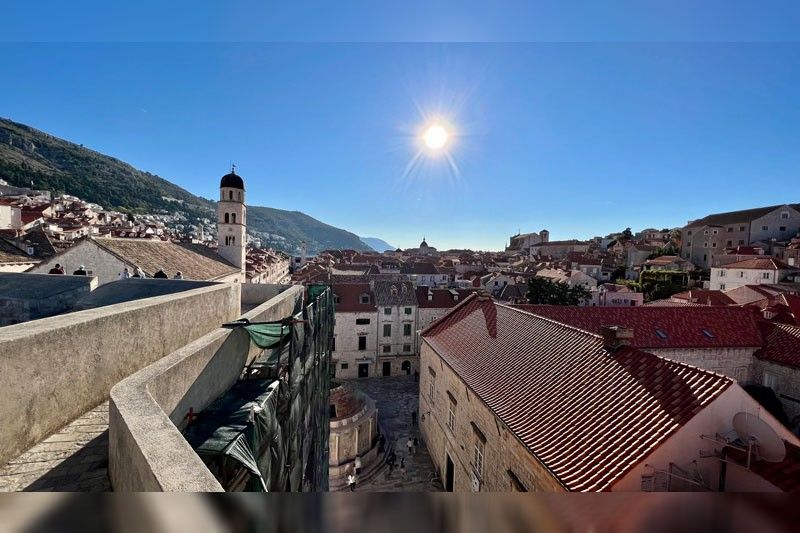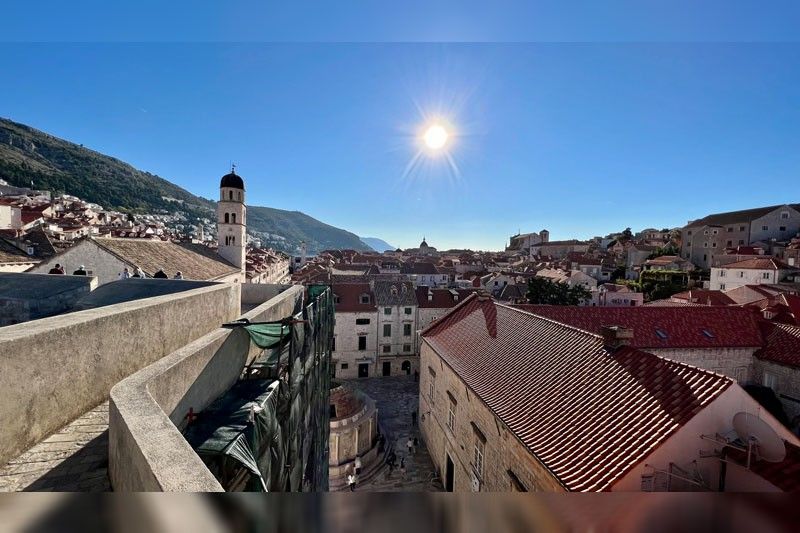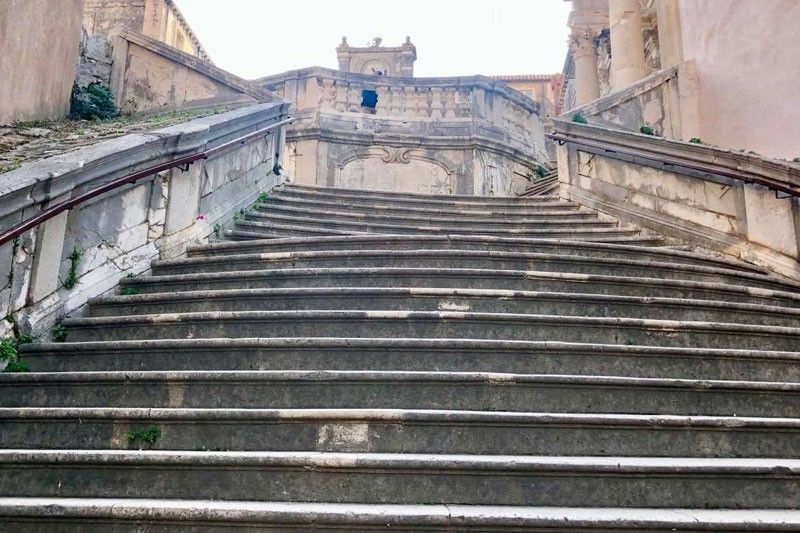Dubrovnik: If only its walls could speak

Dubrovnik — And what a tale they would tell, etched in stone, innumerable chapters immortalized in the nooks and crevices of the centuries-old walls that have mocked time by their very existence. Walls that have witnessed fame and glory, war and peace, renaissance and rebirth, fun and laughter.
“Those who seek heaven on earth should come and see Dubrovnik,” playwright George Bernard Shaw was quoted as saying during a trip here in 1929.

A citadel overlooking the azure Adriatic Sea and sheltered by an equally azure Mediterranean sky, Dubrovnik’s Old Town looks like a movie set. And although it was the setting of a major scene in the fifth season of Game of Thrones (“the Walk of Shame”), Dubrovnik isn’t staged — the cluster of places, fountains, squares, walls and ramparts dating as far back as the seventh century is as genuine as a certified diamond.

Imagine our own Intramuros, but better preserved and zoned. That is Dubrovnik in Croatia. There are no modern buildings, cars, bicycles or trolleys. If your hotel is within the walls, you have to lug up your luggage yourself, so travel light — or muscle up.
Dubrovnik’s Old Town really is like a movie set of Gothic, Renaissance and Baroque churches, palaces and monasteries, but the “set” wasn’t built in a week, a decade or even a century. It was built and cobbled over centuries.

The Old Town was almost decimated by an earthquake in the 17th century, and suffered devastating shelling during the Croatian War of Independence in the early 1990s. Its walls have defied the ravages of war and nature. But what was broken was fixed, restored and honored.
In the Prijecko Palace hotel in the Old Town where my Assumption high school classmates and I stayed during our brief “field trip,” the stairs are remnants of the 14th century while old, exposed stone walls are like artwork inside the guest rooms. Our room had a statue of a saint on one side and a modern painting on the other.
A UNESCO World Heritage Site because of its well-preserved Medieval architecture and fortified Old Town, Dubrovnik has risen from the pain of its past. Dubrovnik is tenacious. In fact, online sources say Croatia is now classified by the World Bank as a high-end economy — just 30 years after the civil war in the Balkans.
***
This “field trip” with my classmates — Andie Recto, Sandy Lamb-Moran, Maite Duarte, Therese Gamboa and Emmy Award-winner Ramona Diaz — was actually my third visit to Dubrovnik. But it was my first time to climb the undulating two-kilometer walls (built between the 13th and 16th centuries) that encircle the city, and from there, saw a symmetry of sky, sea and Medieval architecture in one fell swoop. But after our trek around the walls (be forewarned there are many stone steps, and even more steps to get a thrilling view), I couldn’t agree more with George Bernard Shaw.
You haven’t seen Dubrovnik if you haven’t climbed its walls — with their five forts and 16 towers and ramparts — and listened to their narrative.
***
Placa or Stradun is the main street in the center of Dubrovnik, which divides the Old Town into two parts, southern and northern, which you reach from the drawbridge of Porta Pile (a gate). This pedestrian street is said to be the beating heart of the city, and it is lined by palaces and churches as gelaterias, bakeries, several Game of Thrones souvenir stores and even an artisanal candy store. Prices are very “touristy.”
The Stradun is paved with gleaming marble; we thought the streets were waxed, but were told they weren’t. At the eastern end of the Stradun is the fountain of Onofrio, built in 1438 as part of an aqueduct that brought water to the city from 12 kilometers away. Near the fountain is the Franciscan Monastery where the oldest pharmacy in Europe is said to have been.
One of the standouts in this city of standouts is the Baroque staircase leading to the Church of St. Ignatius and Dubrovnik’s Jesuit college. There are several al fresco restaurants on this square, which is above the staircase and in front of the church. One clear night, our group, which also included Maite’s husband Ricardo Pastor, Therese’s sister Cathy Gamboa Engstrom and her husband Eric, and friend Golzar Aziz, had dinner under the stars in the square under the watchful eyes of St. Ignatius.
Not far from the square is the top of the iconic Baroque staircase. It is where the memorable scene of the “Walk of Shame” in Game of Thrones, during which Cersei Lannister is forced to walk naked through the streets of King’s Landing, begins.
The 18th-century Baroque staircase, designed by Roman architect Pietro Passalacqua, then cascades into a square where locals sell artisanal products such as lavender oil and pouches and embroidered table runners.
Seafood is excellent in Dubrovnik, and their orange cake is simply scrumptious. On our first night in Dubrovnik, my former classmates and I, plus Cathy and Eric, had dinner and drinks to celebrate Ramona’s Emmy in one of the quaint cafes on the side street leading to our hotel. The owner sent us complimentary walnut liqueur to celebrate and the affable waiter even knew the title of Ramona’s award-winning documentary, A Thousand Cuts.
- Latest





























